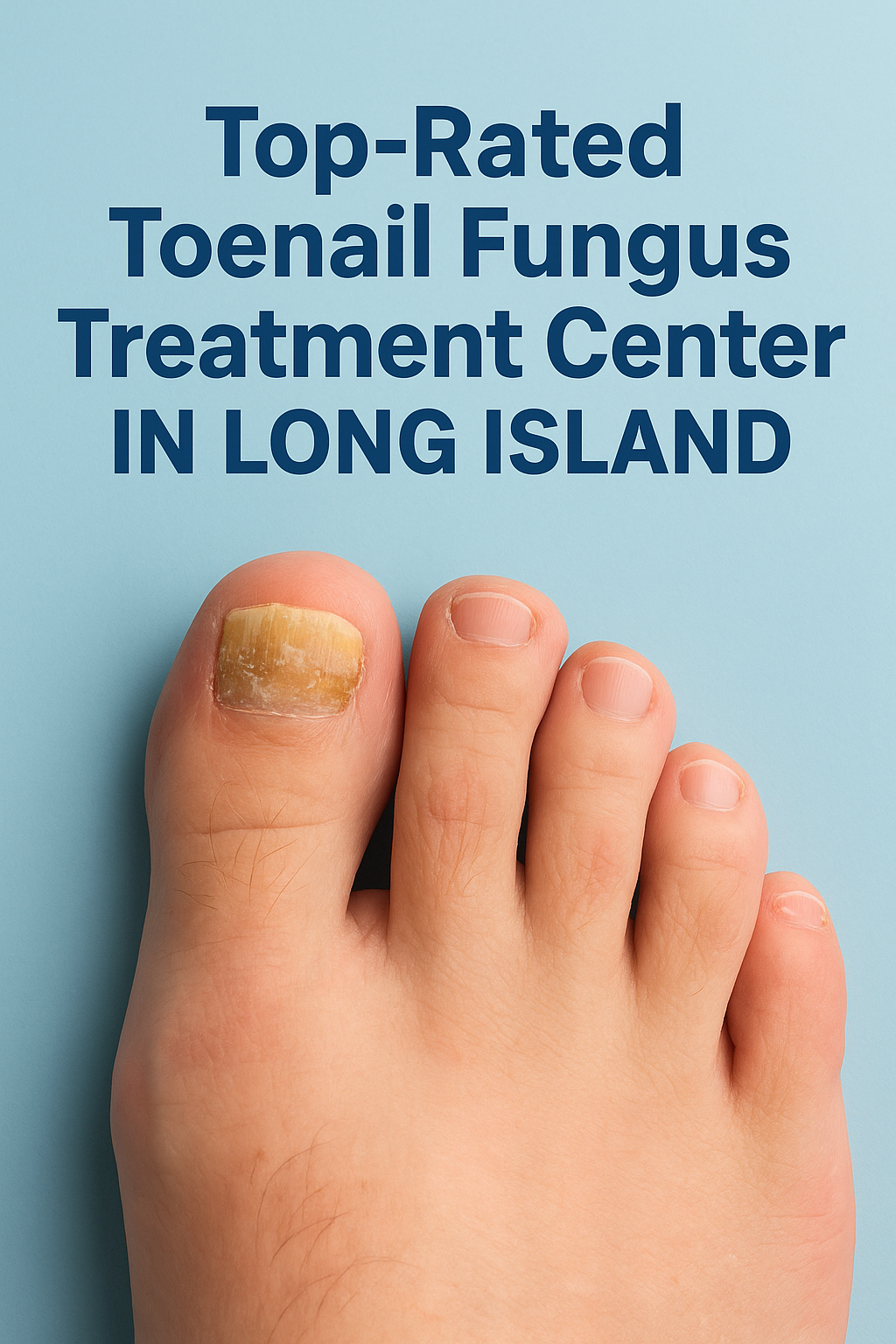
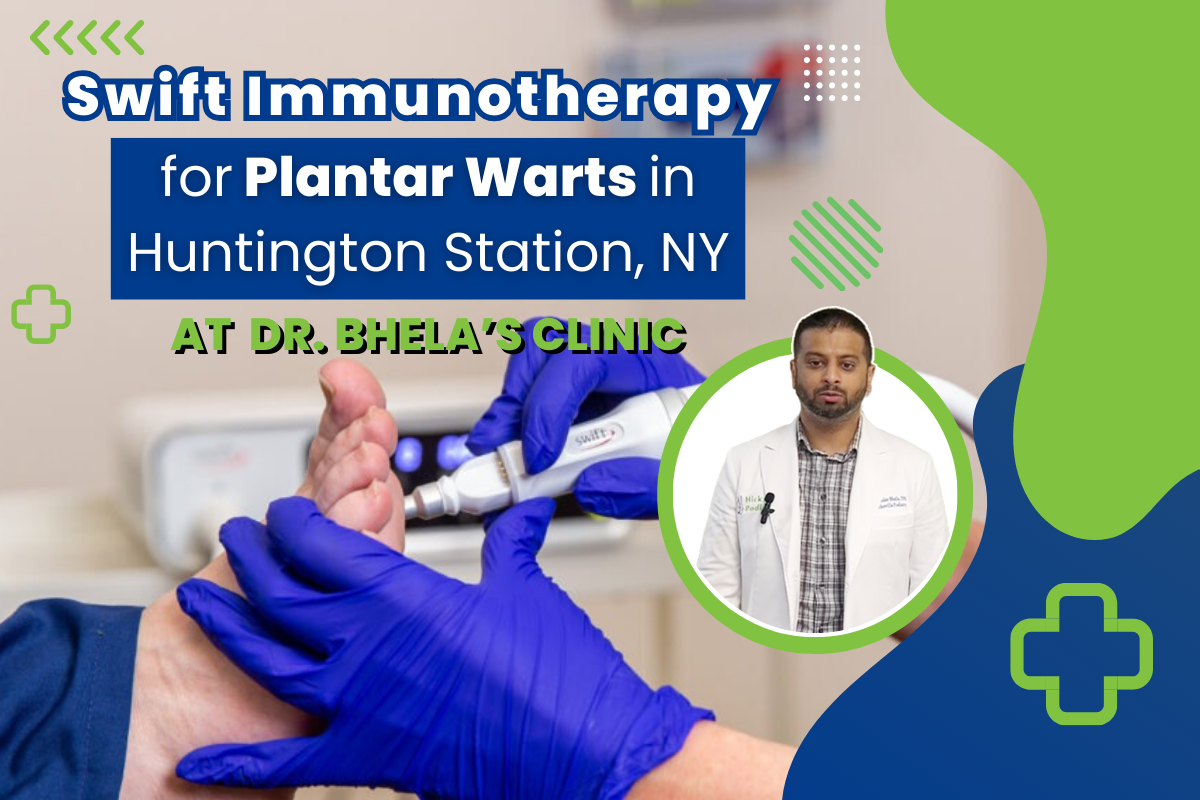
Plantar warts can make every step uncomfortable—especially when they appear on high-pressure spots like the heel or ball of the foot. At Restore Podiatry, our goal is to relieve that pain so you can walk confidently again. To do this, we use the advanced Swift therapy, a plantar wart treatment that uses microwave energy to target stubborn plantar warts at the source. In this guide, we’ll walk you through how Swift works and why it’s an effective option for lasting relief.
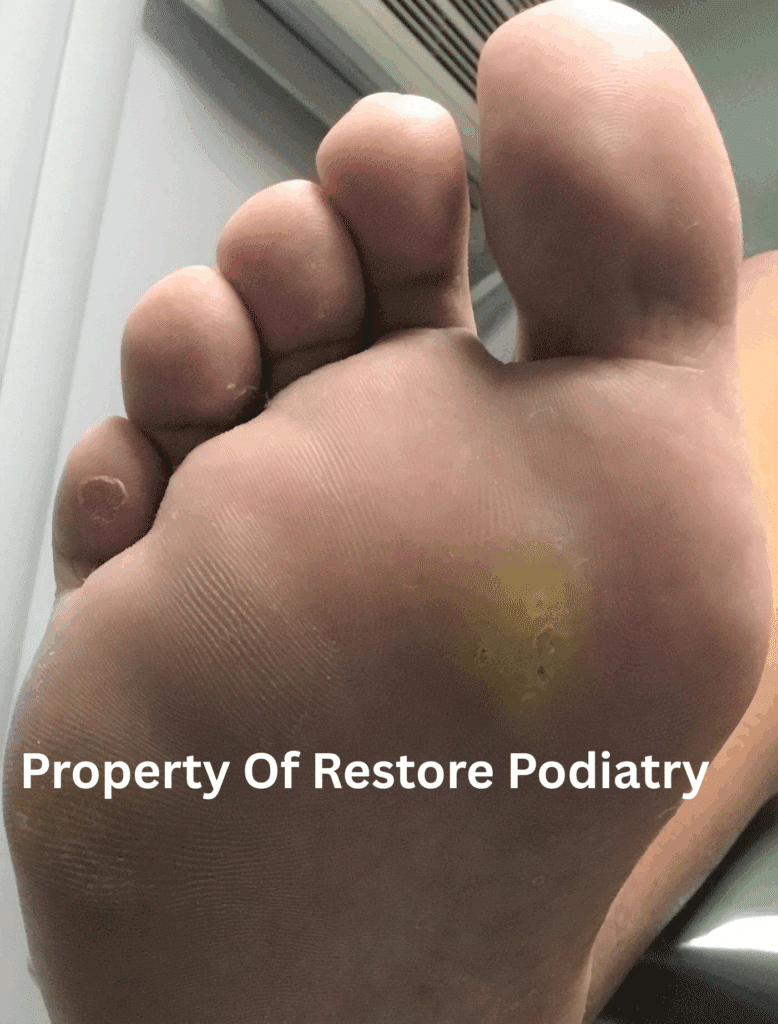
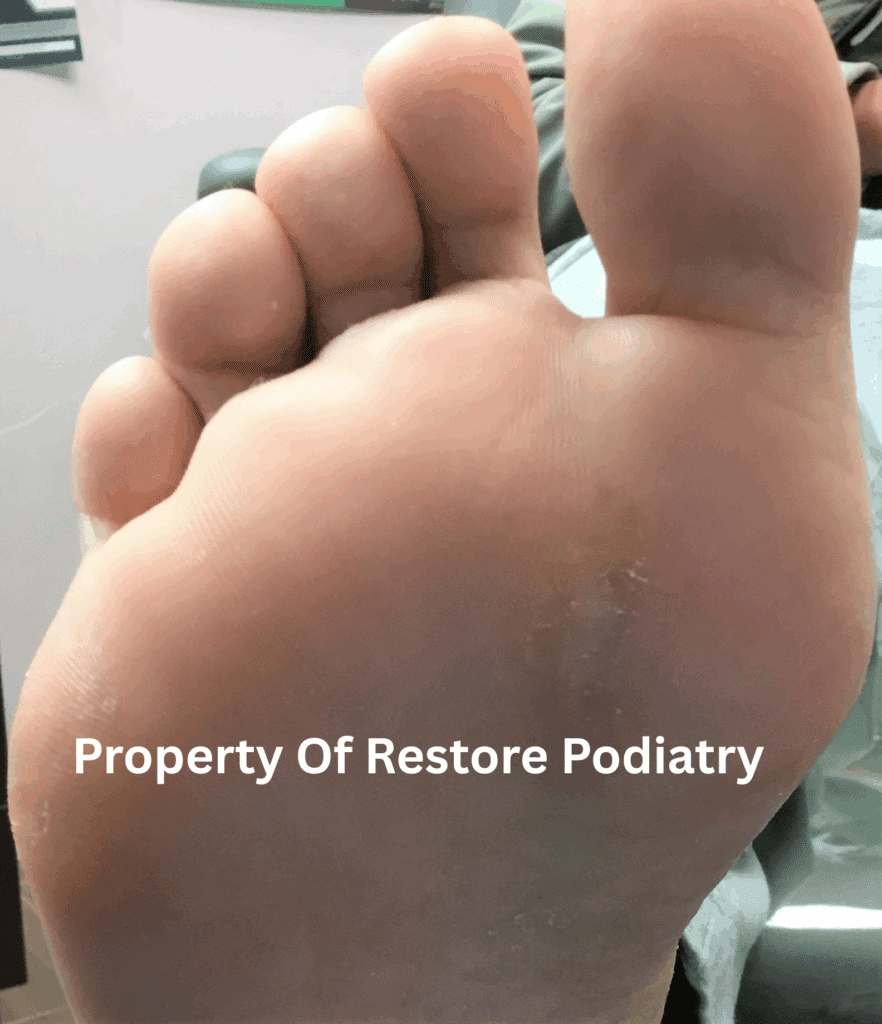
Duration: 3 years
Treatment: Swift Microwave Therapy and Clear Wart Program
# of Tx: 5 treatments
The patient presented with a chronic plantar wart of three years’ duration. Previous treatments included intralesional injections, regular debridement, and topical cantharidin, all of which failed to produce lasting improvement. Given the wart’s resistance to conventional therapies, the patient proceeded with Swift Microwave Therapy.
A total of five treatment sessions were administered over a clinically appropriate interval. Complete resolution of the lesion was achieved, with no signs of recurrence at follow-up. The patient reported significant relief and a return to normal function, expressing high satisfaction with the outcome
Plantar warts—also known as verruca plantaris—are small, grainy skin growths that appear on the bottom of the feet. They’re triggered by specific strains of the human papillomavirus (HPV), which can enter through tiny cuts, scrapes, or weak spots in the skin. Because these warts often form in weight-bearing areas like the heel or ball of the foot, pressure from standing and walking can push them deeper beneath thickened skin. Over time, they may develop root-like extensions, making them especially stubborn to remove.
Certain groups of people face a higher risk of getting plantar warts, including:
Children and teenagers
Individuals with autoimmune conditions
People with compromised immune systems
Adults over 65
If plantar warts don’t clear up naturally and are left untreated, they can interfere with normal movement—impacting how you stand, walk, or run. Over time, this can place added strain on your feet and ankles, leading to changes in posture, muscle fatigue, or joint discomfort. In addition, since HPV is highly contagious, plantar warts can spread easily in damp environments such as gym showers, pool decks, shared towels, and sweaty socks, making prevention and timely treatment especially important.
Plantar warts can look and feel different from person to person, but common signs to watch for include:
Small, rough bumps on the sole of the foot, often near the heel, ball of the foot, or base of the toes
Thickened or hardened skin (callus) where a wart has grown inward
Tiny black dots inside the wart—these are clotted blood vessels, sometimes called “wart seeds”
Clusters of warts (mosaic warts) that appear in patches across the bottom of the foot
Disruption of normal skin lines or ridges on the sole
Pain or tenderness when standing, walking, or applying pressure to the area
At Restore Podiatry, our skilled podiatrist normally diagnose plantar warts through a physical exam. In some cases, we may carefully trim away the top layer to look for the small black dots (wart seeds) common feature of HPV. If needed, a sample may be sent to a lab for confirmation.
While some plantar warts may eventually fade on their own or respond to at-home remedies, many require professional care—especially if they’ve been present for a long time or are causing significant pain. Treatment options include:
Cryotherapy (Freezing Treatment): In-office application of liquid nitrogen freezes the wart, causing a blister to form and the tissue to die off. Multiple sessions, spaced a few weeks apart, are often required.
Salicylic Acid: Strong, prescription-based formulas help gradually peel away layers of the wart over time. Consistency is key, as this method may take several weeks.
Surgical Removal: Cutting out the wart or burning it with an electric needle is an option, but due to risks like scarring or chronic pain, it’s usually reserved for resistant cases.
Cantharidin: This blistering medication is applied directly to the wart. At a follow-up visit, the dead tissue can be trimmed away.
Immunotherapy: Prescription medications may be used to boost the body’s immune system response and target the wart virus.
Laser Therapy: A focused laser seals off the blood vessels feeding the wart, leading to tissue death. Multiple sessions are sometimes necessary.
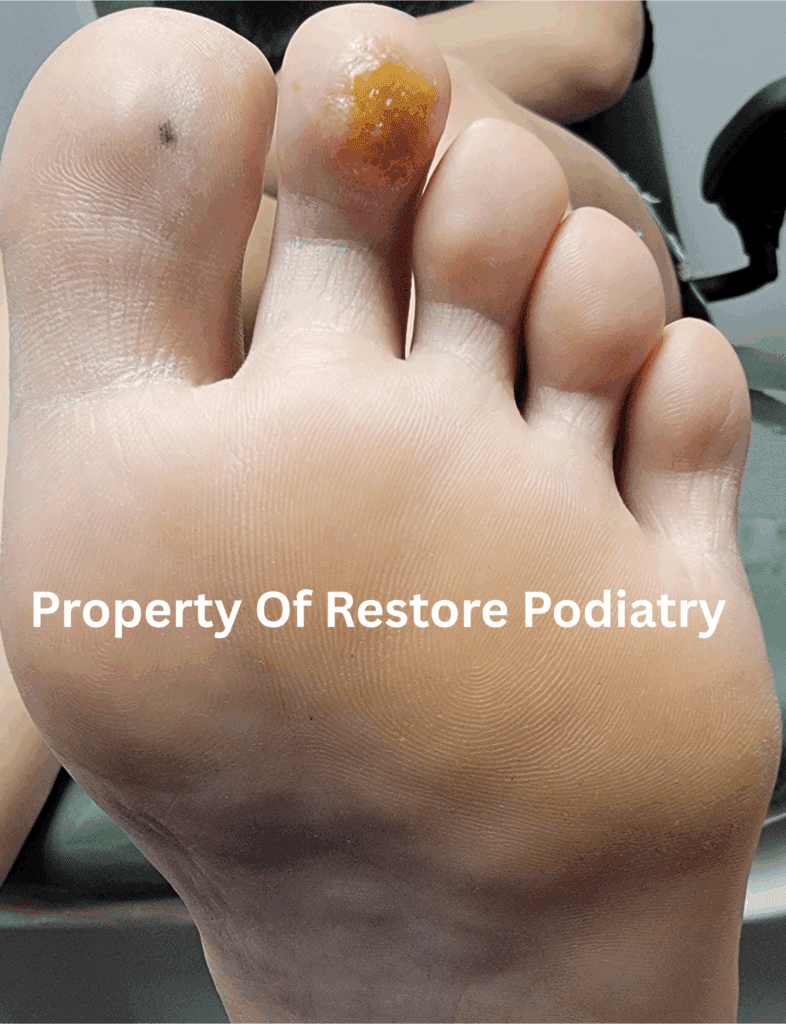
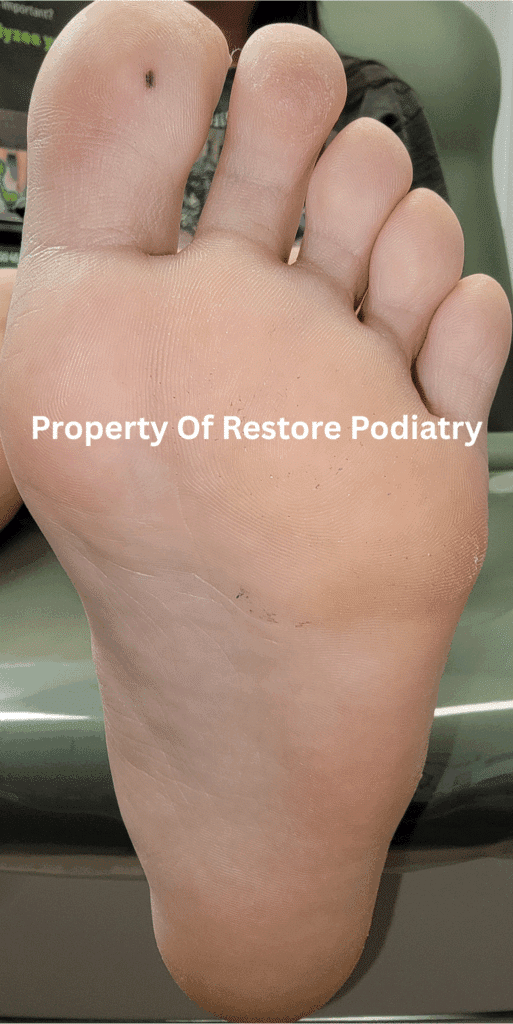
Duration: 2 months
Treatment: Swift Microwave Therapy
# of Tx: 1 treatment
A patient presented with a 2-month-old plantar wart, seeking the most effective treatment without trying any previous therapies. Swift Microwave Therapy was chosen as a first-line option due to its non-invasive nature and high success rate. After just one Swift treatment, the wart resolved completely with no recurrence. The patient experienced no discomfort and reported high satisfaction
A newer advancement in plantar wart treatment is Swift therapy, which has been shown to provide higher success rates compared to many traditional methods. This technology uses a controlled dose of microwave energy, delivered through a precise applicator, to target the wart tissue. Unlike surface-level treatments, Swift microwave therapy (SMT) works by activating the body’s own immune system to recognize and fight the HPV virus—the true source of plantar warts—addressing the root cause rather than just the visible growth.
At Restore Podiatry, we recommend Swift Microwave Therapy as our leading option for plantar wart removal because it is safe, non-invasive, and highly effective. Clinical results show that more than 80% of patients experience successful outcomes, often after just three treatment sessions. Since Swift doesn’t cut or damage the skin, there’s no need for bandages or wound care afterward—and you can return to your usual daily activities right away.
Swift therapy is typically performed over a series of three to four sessions, spaced about four weeks apart. Each appointment lasts around 10 minutes, and since the treatment doesn’t require aftercare, you can return to your normal activities right away. Some patients report mild discomfort during the procedure, but it generally passes quickly once the session is complete.

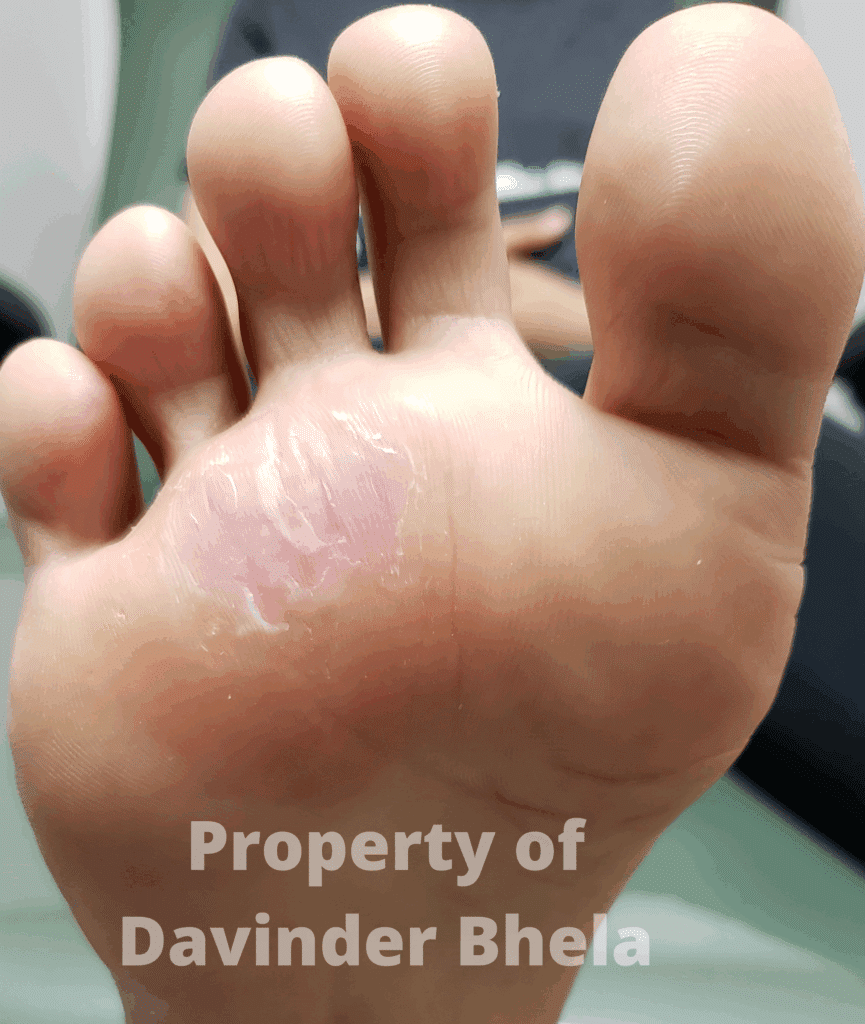
Duration: 6 months
Treatment: Swift Microwave Therapy
# of Tx: 3 treatments
HPV can remain in your system for years, increasing the risk of persistent plantar warts and spreading the virus to others. You should contact our clinic promptly if you notice any of the following signs:
A sensation of “painful pebbles” when walking or standing
Pain when pressing the sides of a wart
A circular, flat spot with a small depressed center
Warts that appear yellowed or crusty, often with tiny black dots
Any lesion on your foot that is painful, bleeding, or has changed color
Warts that have not responded to at-home treatments or keep recurring
Discomfort that interferes with your daily activities
Reduced or lost sensation in your feet
Early treatment can prevent complications and help you regain comfort more quickly.
There are no known side effects with swift therapy. The majority of people don’t experience any side effects.
The swift method is safe for children. But before doing that you should examine the health and the particulars of the plantar warts of the child.
During this treatment, each person will find it painful in his or her own way. This discomfort can also be related to the kind of laser used as well as the position of the wart. Here are some things to think about:
Have any questions or concerns? Our team at Restore Podiatry is here to help! Reach out to us anytime, and we’ll be happy to assist you with expert advice and personalized care.